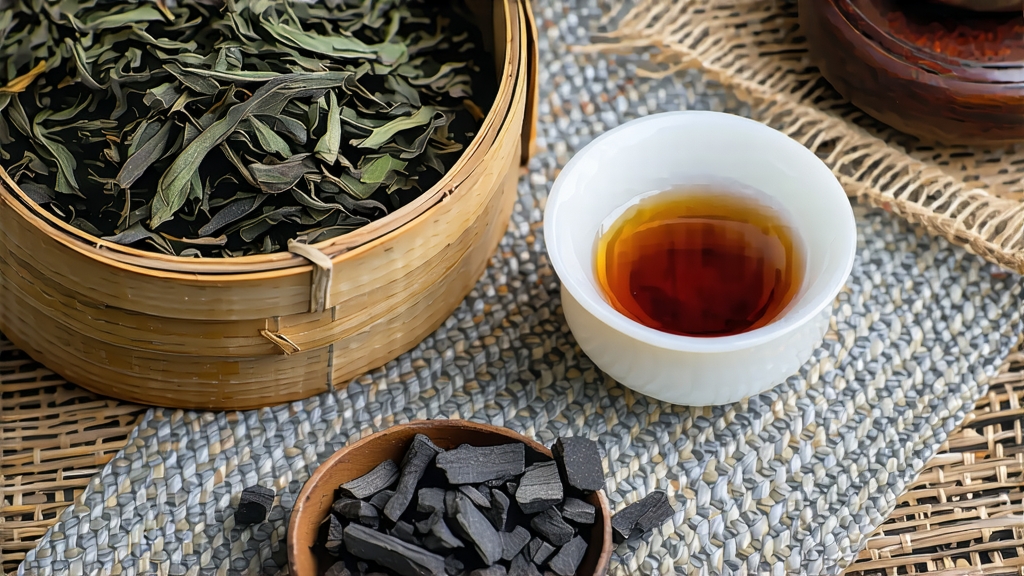
Long before English breakfast tables knew the word “black tea,” caravans carried a mysterious smoked leaf out of the Wuyi Mountains of Fujian. Locals called it Zhengshan Xiaozhong—“small leaf from the original mountain.” Europeans, captivated by its campfire aroma and wine-dark liquor, latinized the place-name Tong Mu Guan into “Lapsang” and dubbed the tea “Souchong” after the larger, late-picked leaves it was made from. Thus Lapsang Souchong stepped onto the world stage in 1604, riding Dutch East India ships to become the first intentionally manufactured black tea the West ever tasted. Its arrival re-defined Chinese export tea, inspired the birth of Assam and Ceylon industries, and still shapes what the globe expects when it lifts a cup labeled “black.”
Yet the story inside modern borders is subtler. Tong Mu Guan sits inside a national nature reserve where the Wuyi massif traps moist clouds, creating a cool, misty micro-climate. The soil is acid volcanic loam shot through with quartz; the altitude hovers between 600 and 1,200 m. Such conditions slow leaf growth, concentrating amino acids and volatile aromatics. Two indigenous cultivars dominate: Cai Cha (a mixed population of small, hardy bushes) and the more recent Wuyi Qizhong series selected for fragrance. Because the reserve bans pesticides and limits acreage, authentic Zhengshan Xiaozhong yields are tiny—barely 50 tons a year—making every leaf a geographic relic.
The craft begins the third week of May, when growers pluck one bud with two or three mature leaves, a grade above the four-leaf pick used for export versions. Withering happens in the second story of a wooden house whose latticed windows funnel mountain breeze across bamboo trays. For 8–10 hours the leaf loses about 65 % moisture, turning limp and releasing grassy aldehydes. Next comes rolling, once done by foot in a deep cast-iron trough but now by machine for consistency. Ten minutes under light pressure ruptures cells, starting enzymatic oxidation that will turn catechins into theaflavins and thearubigins. The pile is covered with wet cloth and left in a pine-wood room at 24 °C and 85 % humidity. Four hours later the leaf has taken the coppery color of a fox’s coat; the master judges readiness by the sweet apple note that rises when a handful is thrown into the air.
What follows separates Lapsang from every other black tea: the smoke. Below the oxidation floor, a pit burns resin-poor pinus massoniana logs that have been seasoned for three years. The smoke is cool—never above 40 °C—so it perfumes rather than cooks. Trays of tea slide into a bamboo pavilion whose rafters act like a chimney, allowing smoke to swirl upward through the leaf for 6–8 hours. Phenols such as guaiacol and syringol adhere to the leaf surface, gifting the famous pine, dried longan and whisky notes. Finally the tea is given a gentle charcoal bake, 80 °C for two hours, lowering moisture to 5 % and locking the fragrance inside. When done correctly the smoke is not a mask but a halo: it should suggest pine needles warmed by sun rather than a campfire in your mouth.
Grades are distinguished by both leaf size and smoke intensity. Wuyi Zhengshan Xiaozhong—often sold as “unsmoked” abroad—receives only ambient wood-fire aromas while drying; its liquor is bright amber, tasting of honey, lychee and mineral rock. Traditional Lapsang Souchong is lightly smoked, balanced enough to drink neat. Export “Tarry” or “Russian Caravan” styles are rolled tighter, oxidized longer and smoked twice, yielding a tar-black leaf and assertive creosote punch favored by Baltic markets. A niche winter-pick version called Xue Ya (Snow Bud) is harvested after first frost; the cold shock heightens sweetness, and a single gram can infuse a liter without bitterness.
To brew Lapsang gongfu style, start with 5 g of leaf in a 120 ml porcelain gaiwan. Rinse once with 95 °C water to wake the aromatics, discarding after five seconds. The first formal infusion lasts ten seconds